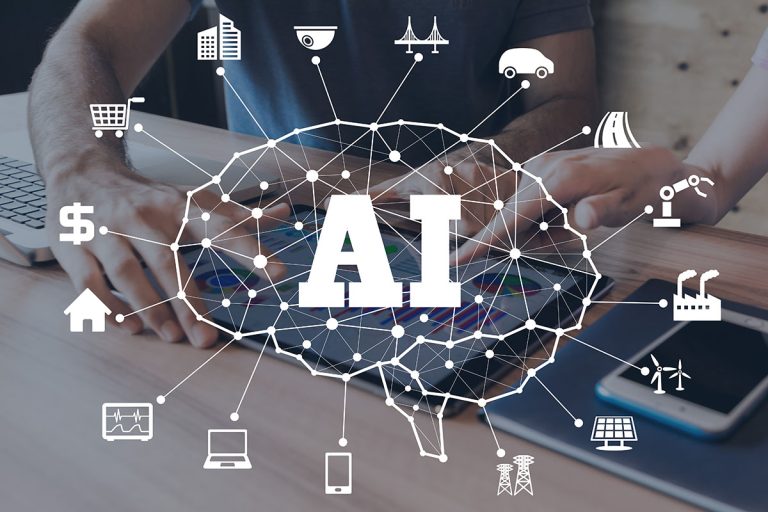The latest rapid developments in AI and GenAI represent a new milestone in the IT and cybersecurity landscape. They present new business opportunities, growing challenges for enterprise security, and the need for new features in security platforms.
Although the debate between cybersecurity platforms and point solutions has been a hot topic in cybersecurity for years, new security challenges related to enterprise AI adoption reinforce the need for a consolidated platform approach.
As with security paradigms such as Zero Trust, SASE, and SSE, optimal security in the AI era benefits from centralized management, consistent enforcement, and unified monitoring. This makes a consolidated security platform the fundamental component of a modern cybersecurity infrastructure, capable of combating new threats related to AI adoption, reducing complexity, simplifying security operations , reduce costs and improve overall safety levels.
In particular, the most advanced modern security platforms must understand how AI is changing the enterprise attack surface and be able to mitigate the very real and substantial new risks associated with these changes.
AI adoption increases attack surface
Employees are adopting AI applications at an unprecedented rate. Leading players across industries are gaining a competitive edge by introducing their own AI-based applications. However, the growing use of these technologies expands the attack surface and presents security professionals with three new challenges:
- Eliminate data and security risks associated with employee access and use of generative AI (Gen AI) applications.
- Enable rapid development of Gen AI applications by reducing risks in the AI application stack and supply chain.
- Provide runtime protection against new attacks targeting their AI ecosystem.
New Attack Surface #1: Employee Adoption of AI
Due to their extraordinary capabilities, applications based on AI and large language models (LLM) have raised new data security challenges and expanded the attack surface. As their adoption snowballs, these applications become more attractive and profitable targets for attackers. A recent Salesforce Survey of more than 14,000 workers found that 55% of employees use unapproved Gen AI at work. With dozens of new AI applications launching every month, it’s only a matter of time before there are AI applications for every employee and every use case.
This new type of use of shadow IT can expose organizations to data leaks and malware. At the same time, according to TechTarget Corporate Strategy Group, 85% of companies have planned proprietary LLMs or are already integrated into products generally available to their customers. Shadow IT transforms into Shadow AI. Employees are shifting to what works for them and makes them more productive, which creates significant challenges for a strong security posture.
New Attack Surface #2: The AI Supply Chain
Employee use of third-party AI isn’t the only way AI is making its way into the enterprise. Innovative organizations are realizing they can improve both their bottom line and bottom line by empowering their own applications with AI. As this happens, new AI components are added to application stacks, increasing the potential for sensitive data exposure through training and inference datasets.
Reducing security risks in the AI development supply chain will be increasingly important for businesses as they need to identify vulnerabilities and exposures in their AI-based applications.
New Attack Surface #3: The Entire AI Ecosystem at Runtime
In addition to protecting the AI development supply chain, the security of AI components extends to the runtime use of applications that depend on these new supply chains. Runtime threats to these AI ecosystems include rapid injections, malicious responses, and LLM denial of service.
training in data poisoning and fundamental execution attacks, such as malicious URLs, command and control, and lateral movement of threats.
The Platform Model for Secure Enterprise Adoption of AI
So how can businesses unlock the competitive advantage of revolutionary AI technologies while keeping them secure? This is the burning question for security professionals looking for ways to enable their organizations to create value from AI.
In the age of AI, modern security platforms must:
Ensure visibility and control of AI use within the organization
Information security professionals need visibility and control over hundreds of third-party AI applications. Their platform must prevent sensitive data leaks with comprehensive data classification capabilities. It should also enable them to secure their devices, applications and networks against threats from insecure or compromised AI platforms.
Enable secure AI integration during application development and execution
The modern security platform must be able to defend against sensitive data exposure by classifying the entire AI stack with data security across all model assets. Security professionals need
visibility into AI application code, models, and associated assets to identify and trace the lineage of AI components and data used in the creation of new applications. Their security platform should also provide model risk analysis to reduce data exposure, misconfigurations, and excessive access.
Effectively use AI to respond to adversaries’ newly enabled scale and efficiency
The modern security platform must also use AI to combat the evolving nature of threats that also use AI. It must leverage large amounts of high-quality data to achieve better security outcomes across the organization, including the ability to “ingest” data from third-party sources at will. This high-quality centralized data plays an important role in ensuring high levels of protection against attacks and reducing MTTR (mean response time).
The future of AI is here and can be secured
As enterprise adoption accelerates, now is the time to protect enterprise use of AI, reduce operational complexity, and simplify network security operations by studying the latest developments in platform-based AI security. Click here to find out more.


